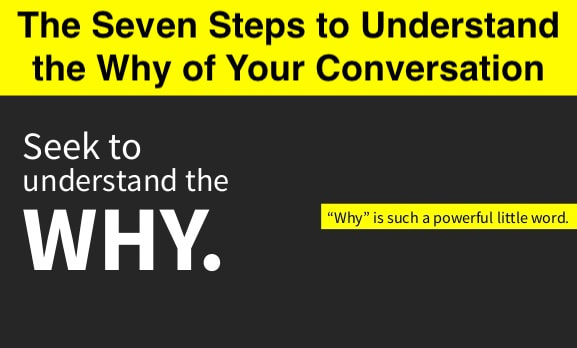The Seven Steps to Understand the Why of Your Conversation Have you ever walked into a conversation or meeting and had no idea what you were there to do? Has your spouse ever said, “go deal with your child” and you didn’t even know what they had done?
These may seem like excess examples, but these types of situations happen to us all the time in varying degrees. Sometimes it is as simple as we didn’t do the proper research before a conversation and are unprepared to discuss the topic. Other times, we have inaccurate “facts” that get in the way of our conversations. The Learning Laboratory There are hundreds of books about discovering our why. If you take that concept a step further, it is critical to uncover our “why” when it comes to a difficult decision. Truly understand the situation and our motives is essential to delivering tough news with ease. Our brain, the incredible intelligent system it is, designs neuropaths that make us jump to conclusions and make assumptions in a nanosecond. And, the worst part is that nanosecond happens in our Amygdala, the fear center of our brain. When we jump to these conclusions, as we do too often in difficult conversations, we make assumptions about harmful intentions, careless acts and hurtful behaviors. Coaching Tips When delivering dignified dialogue, we teach a nine-step model specially designed to make giving tough news more comfortable. The first step seems simple but is critical to a conversation’s success: Uncovering the Purpose. Below is the process our clients walk through to determine the purpose:
0 Comments
Leave a Reply. |
Details
Archives
June 2020
Categories |

 RSS Feed
RSS Feed
